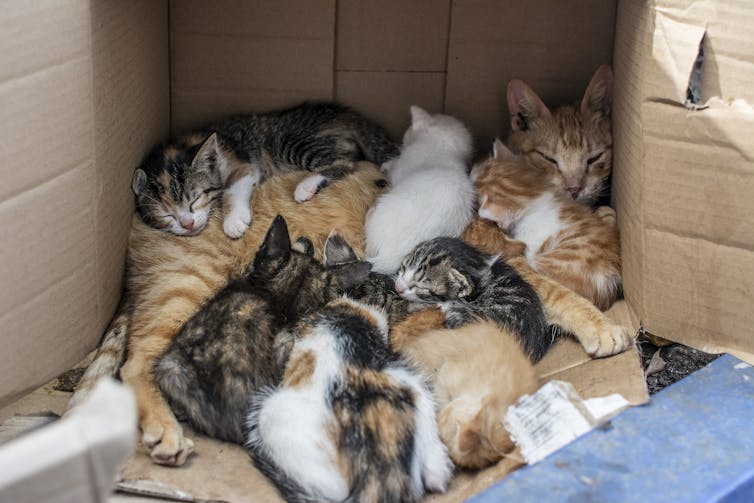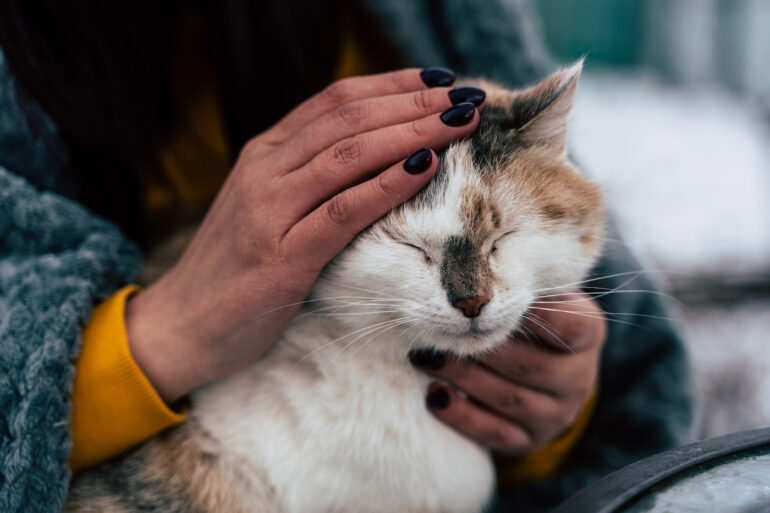
Uncommon Courses is an occasional series from The Conversation U.S. highlighting unconventional approaches to teaching.
Title of course:
“The Science of Cats”
What prompted the idea for the course?
I’m an evolutionary biologist who has spent my career studying the evolution of small lizards in the Caribbean. I’m also a lifelong cat lover, but it never occurred to me to do anything scientific with house cats. They’re hard to study – ever tried to follow your cat around to see what they’re doing? And in contrast to amply studied lions, tigers and other wild felines, I was under the impression that there wasn’t any interesting research being conducted on the domestic representative of the cat clan, Felis catus.
Twelve years ago, I learned that I was completely wrong. Thanks to John Bradshaw’s book “Cat Sense” and the BBC’s “The Secret Life of the Cat,” I discovered that ailurologists were using the same cutting-edge methods – GPS tracking, genome sequencing, isotopic analysis – to study domestic cats that I use to study lizards and other researchers use with all manner of other creatures.
Thus was born my class on the science of cats. I’d lure students in with their love of felines and then, when they weren’t looking, I’d teach them how scientists study biodiversity – ecology, evolution, genetics and behavior.
What does the course explore?
In essence, the course is about the past, present and future of cats: where they came from, why they do what they do, what the future may hold. And, critically, how we know what we know – that is, how scientists address these sorts of questions.
The course concludes with students writing an original paper or making a mini-documentary. These projects have spanned a vast range of topics in biology and beyond, such as the impact of cats on bird populations, sexism and the crazy cat lady trope, the health effects pro and con of living with felines, the role of hybridization as a creative or constraining force in evolution, the top-down role of larger predators like coyotes and dingoes in controlling cat numbers, and the prospects for new genetic technologies to create allergen-free cats or to curb free-roaming cat populations.
Unexpectedly, the students weren’t the only ones who ended up writing about cats: The class and its themes inspired me to write my own book, “The Cat’s Meow: How Cats Evolved from the Savanna to Your Sofa.”

Cats’ fur patterns can illustrate a genetics lesson.
Sabina Ja/500px via Getty Images
Why is this course relevant now?
Society needs more biodiversity scientists to understand our rapidly changing world. Cats pose scientific questions of broad interest, and they may serve as a gateway introduction to the world of biological research.
What’s a critical lesson from the course?
Important research on the natural world does not require…



